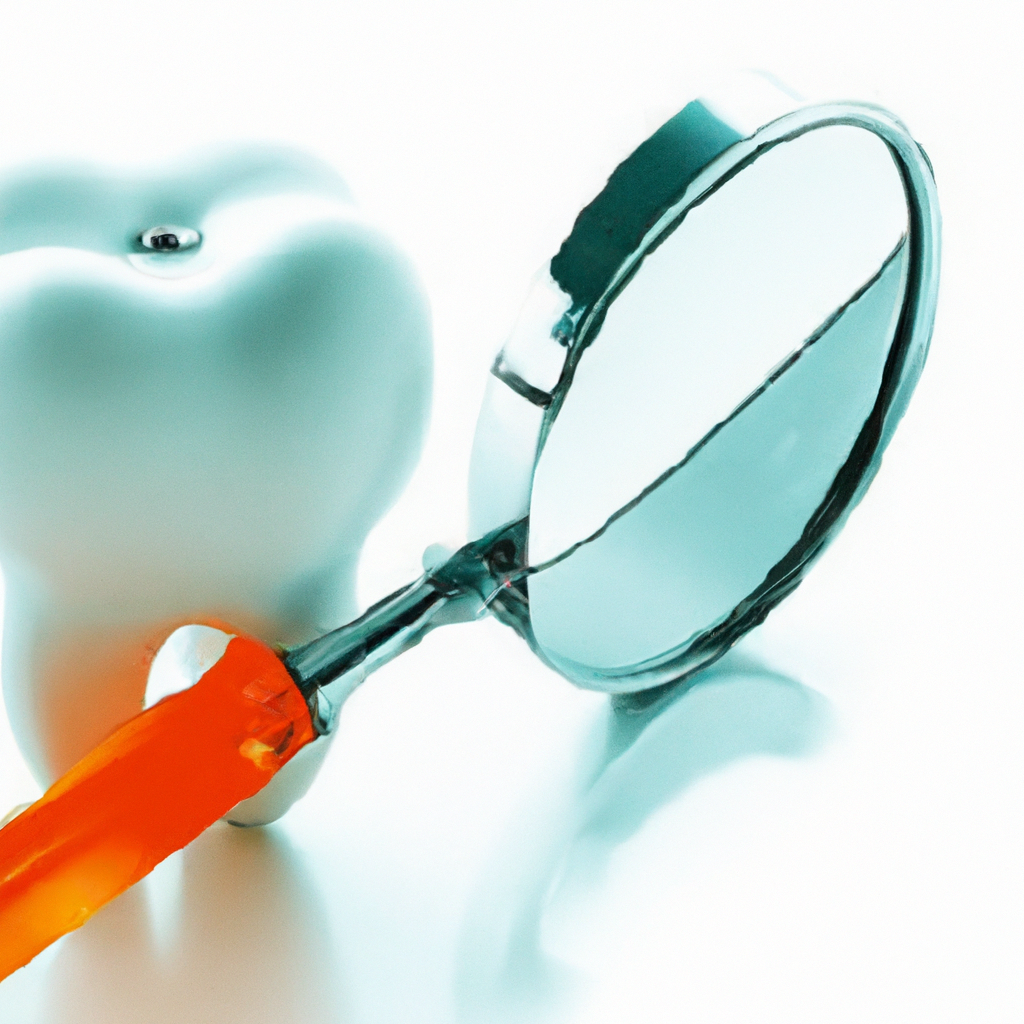In today’s digital world, it’s essential for dentists to have a strong online presence in order to attract new patients and grow their practices. That’s where Local SEO comes in. By utilizing specific tactics tailored to the dental industry, dentists can boost their online visibility and ensure they are easily found by potential patients in their local area. From optimizing website content to leveraging location-based keywords, these Local SEO strategies can make a significant impact on a dentist’s online visibility and ultimately, their success. And if you’re a dentist in Philadelphia, you’ll be happy to know that Ortho Advertising specializes in providing Local SEO services specifically for dentists and orthodontists in your area.

Heading 1: Understanding Local SEO
Subheading 1: What is local SEO?
Local SEO, or local search engine optimization, is a digital marketing strategy designed to boost the online visibility of businesses within their specific geographical area. It involves optimizing various elements of a website and online presence to increase rankings in local search results.
Subheading 2: Why is local SEO important for dentists?
Local SEO is particularly crucial for dentists because their target audience is typically local patients seeking dental services in their area. By implementing effective local SEO tactics, dentists can improve their online visibility, attract more patients to their practice, and ultimately increase their revenue.
Subheading 3: Benefits of local SEO for dentists
There are several benefits that local SEO can bring to dentists. Firstly, it helps dentists target their ideal audience and connect with potential patients who are actively searching for dental services nearby. Secondly, local SEO leads to higher website rankings in local search results, making it easier for potential patients to find and choose a dentist. Finally, by optimizing their online presence, dentists can establish credibility and build trust with their local community.
Heading 2: Key Elements of Local SEO
Subheading 1: Website optimization
Website optimization is the foundation of an effective local SEO strategy. It involves making sure the website is user-friendly, mobile-friendly, and loads quickly. Dentists should focus on optimizing their website architecture, navigation, and content to provide a seamless experience for visitors.
Subheading 2: Google My Business listing
A Google My Business (GMB) listing is a crucial component of local SEO for dentists. It allows dentists to create a detailed business profile that appears in local Google search results and Google Maps. Optimizing the GMB listing with accurate and up-to-date information helps attract potential patients and improves local search visibility.
Subheading 3: Local keyword research
To effectively optimize their website and online content, dentists need to conduct local keyword research. This involves identifying relevant keywords that potential patients are using to search for dental services in their area. By integrating these keywords strategically into their website content, dentists can increase their chances of appearing in local search results.
Subheading 4: Online reviews and reputation management
Online reviews play a significant role in local SEO for dentists. Positive reviews not only attract potential patients but also help boost search rankings. Dentists should actively encourage satisfied patients to leave reviews and engage with them through responding to feedback. Managing online reputation is crucial to maintaining a positive image in the local community.
Subheading 5: Local citations and directories
Local citations and directories are online listings that mention dentists’ practice name, address, and phone number (NAP). Consistent and accurate NAP listings on relevant directories help improve a dentist’s local SEO. Dentists should actively seek out local directories and ensure their NAP information is consistent across all platforms.

Heading 3: Website Optimization for Local SEO
Subheading 1: Mobile-friendly design and responsiveness
In today’s digital landscape, having a mobile-friendly website is essential. With a significant portion of searches happening on mobile devices, dentists must optimize their website to provide a smooth and responsive user experience across all devices. This includes ensuring buttons and text are easily clickable, images are properly sized, and loading speed is optimized.
Subheading 2: Optimizing title tags and meta descriptions
Title tags and meta descriptions are HTML elements that provide concise summaries of web page content. Dentists should optimize these tags by including relevant keywords and location-specific information. This not only helps search engines understand the content of the page but also increases the likelihood of attracting clicks from potential patients.
Subheading 3: Including location-specific keywords
To rank well in local search results, dentists should include location-specific keywords throughout their website. Incorporating city or neighborhood names in page titles, headings, and content helps search engines understand the geographical relevance of the website. This can greatly improve local visibility.
Subheading 4: Optimizing website loading speed
Website speed is crucial for user experience and search engine rankings. Slow-loading websites often lead to high bounce rates, negatively impacting SEO efforts. Dentists should optimize their website’s loading speed by compressing images, minifying code, and leveraging caching techniques. This will ensure visitors have a positive experience and encourage them to stay on the site longer.
Subheading 5: Creating unique and engaging content
High-quality and engaging content is key to attracting and retaining visitors to a dentist’s website. Dentists should create unique and informative content that addresses common dental concerns and provides valuable insights. Incorporating local keywords and frequently asked questions about dental services in the area can help improve local SEO.
Heading 4: Google My Business Listing Optimization
Subheading 1: Claiming and verifying your Google My Business profile
The first step to optimizing a dentist’s Google My Business (GMB) listing is claiming and verifying the profile. This ensures that the dentist has control over the information displayed on their listing and can make updates as needed. Verification can be done through a postcard, phone call, or email verification process.
Subheading 2: Optimal categorization and business description
Proper categorization plays a crucial role in GMB optimization. Dentists should select the most relevant category for their practice to ensure accurate results in local search. Additionally, a well-crafted business description that highlights the dentist’s expertise, services, and location can further enhance the GMB listing’s visibility.
Subheading 3: Ensuring accurate contact information
Accurate contact information is essential for potential patients to reach out to a dentist’s practice. Dentists should verify that their NAP (Name, Address, and Phone) information is consistent across all platforms and confirm that it matches the information on their website. Consistency helps search engines understand and validate the dentist’s local presence.
Subheading 4: Adding high-quality images and videos
Visual content, such as images and videos, can significantly enhance a dentist’s GMB listing. Dentists should upload high-quality and relevant visuals that showcase their practice, facilities, and team. Including images of smiling patients, state-of-the-art dental equipment, and a welcoming environment can instill confidence in potential patients and encourage them to choose the dentist’s practice.
Subheading 5: Encouraging customer reviews and engagement
Positive customer reviews not only boost a dentist’s reputation but also improve their search visibility. Dentists should actively encourage happy patients to leave reviews on their GMB listing. Additionally, they should engage with the reviews by responding promptly and professionally. This demonstrates excellent customer service and helps build trust with potential patients.

Heading 5: Local Keyword Research
Subheading 1: Identifying relevant local keywords for dentists
To effectively optimize their website and online content, dentists need to identify relevant local keywords. This involves researching the terms potential patients are using to search for dental services in their area. Tools like Google Keyword Planner and Google Trends can help dentists uncover popular and location-specific keywords.
Subheading 2: Using location modifiers and long-tail keywords
Location modifiers, such as city names or neighborhood names, can be added to keywords to target specific geographical areas. Long-tail keywords, which are more specific and less competitive, can also be utilized to attract local patients. Dentists should integrate these keywords strategically into their website content, page titles, and meta tags.
Subheading 3: Analyzing keyword search volume and competition
Understanding keyword search volume and competition is crucial for dentists to prioritize their optimization efforts. Dentists should utilize keyword research tools to analyze the search volume and competition level of various keywords. By focusing on keywords with moderate to high search volume and lower competition, dentists can increase their chances of ranking well in local search results.
Subheading 4: Incorporating keywords into website content
To improve local SEO, dentists should strategically incorporate keywords into their website content. This includes optimizing page headings, subheadings, and body text. Dentists should aim for a natural and informative flow, avoiding keyword stuffing or over-optimization, which can have a negative impact on search rankings.
Subheading 5: Tracking keyword performance
Regularly monitoring the performance of targeted keywords is essential to gauge the effectiveness of local SEO efforts. Dentists should use tools like Google Analytics and rank tracking software to evaluate keyword rankings, organic traffic, and conversions. This data can help dentists make data-driven adjustments to their local SEO strategy and enhance their online visibility.
Heading 6: Online Reviews and Reputation Management
Subheading 1: Importance of online reviews for dentists
Online reviews have a significant influence on a dentist’s online reputation and local SEO. Positive reviews act as powerful endorsements and can attract potential patients. Conversely, negative reviews can tarnish a dentist’s reputation. Dentists should prioritize managing online reviews to ensure a positive perception and improved search visibility.
Subheading 2: Encouraging positive reviews from satisfied patients
Dentists should actively encourage satisfied patients to leave reviews on prominent review platforms. This can be done through follow-up emails, social media posts, or in-person requests. By providing exceptional service and experiences, dentists can increase the likelihood of receiving positive reviews and build a stellar online reputation.
Subheading 3: Responding to reviews, both positive and negative
Responding to reviews, whether positive or negative, is essential for dentists. Taking the time to thank patients for positive feedback shows appreciation and engagement. For negative reviews, dentists should respond promptly, professionally, and constructively to address any concerns and demonstrate a commitment to resolving issues.
Subheading 4: Managing online reputation across review platforms
Dentists should actively monitor and manage their online reputation across various review platforms, such as Google My Business, Yelp, and Healthgrades. Maintaining a positive and consistent brand image by responding to reviews and addressing any negative feedback helps build trust with potential patients and improves local SEO.
Subheading 5: Monitoring and addressing negative feedback
Negative feedback can be an opportunity for dentists to learn, improve, and showcase exceptional customer service. Dentists should monitor negative reviews and take proactive steps to address any valid concerns. Responding politely, addressing the issue, and offering a solution or explanation can help mitigate the impact of negative feedback on their online reputation.

Heading 7: Local Citations and Directories
Subheading 1: What are local citations and directories?
Local citations and directories are online listings that mention a dentist’s practice name, address, and phone number (NAP). These listings contribute to a dentist’s online presence and are crucial for local SEO. They can include general directories like Yelp or specialized dental directories. Citations and directories should contain consistent and accurate NAP information.
Subheading 2: Ensuring consistent NAP (Name, Address, Phone) information
Consistency in NAP information across all online platforms is essential for local SEO. Dentists should thoroughly review and update their NAP information on their website, Google My Business, and other relevant directories. Inconsistencies can confuse search engines and potential patients, negatively impacting a dentist’s local search visibility.
Subheading 3: Submitting your practice to relevant local directories
Dentists should submit their practice to relevant local directories to boost their online visibility. These directories can include local chambers of commerce, dental associations, or industry-specific directories. The accuracy of NAP information is crucial when submitting to directories to maintain consistency and enhance local SEO efforts.
Subheading 4: Managing and updating citations regularly
Managing local citations requires regular audits and updates to reflect any changes in a dentist’s practice information. Dentists should monitor their citations and directories for accuracy and promptly update any outdated information. This ensures potential patients can find the correct contact information and helps improve local search visibility.
Subheading 5: Monitoring and responding to online mentions
Apart from directories, dentists should monitor online mentions of their practice on platforms like social media, forums, and review sites. Engaging with and responding to these mentions, whether positive or negative, shows proactive involvement in the local community. It also helps build a positive reputation and improves local SEO.
Heading 8: Utilizing Google Maps and Local Pack
Subheading 1: Optimizing for Google Maps search results
Appearing in Google Maps search results is crucial for local SEO. Dentists should ensure their Google My Business listing is complete and optimized, with accurate NAP information and relevant keywords. Encouraging positive patient reviews and engaging with them can also improve a dentist’s visibility in Google Maps.
Subheading 2: Maximizing visibility in the Local Pack
The Local Pack is a prominent feature in Google search results that showcases a map with three local businesses related to the search query. Dentists can maximize visibility in the Local Pack by ensuring their Google My Business listing is properly optimized. This includes accurate NAP information, positive reviews, and relevant keywords.
Subheading 3: Encouraging patient reviews on Google Maps
Patient reviews play a crucial role in a dentist’s visibility and prominence on Google Maps. Dentists should actively encourage satisfied patients to leave reviews specifically on their Google My Business listing. Positive patient reviews not only enhance a dentist’s reputation but can also improve their ranking within the Local Pack.
Subheading 4: Utilizing location-based keywords in content
To increase visibility in Google Maps and the Local Pack, dentists should strategically include location-based keywords in their website content. By targeting local search queries with relevant keywords and valuable content, dentists can improve their chances of ranking higher in Google Maps and attracting local patients.
Subheading 5: Monitoring and analyzing Google Maps performance
Regularly monitoring and analyzing the performance of a dentist’s Google Maps presence is essential for local SEO. Dentists should use tools like Google Analytics and Google My Business Insights to track metrics such as website clicks, direction requests, and phone calls from their Google Maps listing. This data provides insights into the impact of local SEO efforts and guides future optimizations.

Heading 9: Social Media and Local SEO
Subheading 1: Leveraging social media for local SEO
Social media platforms can significantly contribute to a dentist’s local SEO efforts. Dentists should leverage social media channels like Facebook, Instagram, and Twitter to engage with their local community, showcase their expertise, and promote their services. By consistently posting relevant and engaging content, dentists can increase their online visibility and attract local patients.
Subheading 2: Growing a local community through social platforms
Building an engaged local community on social media platforms is beneficial for dentists’ local SEO. Dentists can achieve this by sharing content that appeals to their target audience, such as oral hygiene tips, community events, and patient testimonials. Encouraging followers to share and engage with the content further amplifies the dentist’s visibility within the local community.
Subheading 3: Sharing local news, events, and updates
Sharing local news, events, and updates on social media platforms helps dentists stay connected with their local community. By keeping followers informed about dental-related news and events in their area, dentists can position themselves as a trusted source of information and reinforce their local presence.
Subheading 4: Engaging with followers and responding to inquiries
Active engagement with social media followers is crucial for dentists’ local SEO. Dentists should respond promptly and thoughtfully to comments, messages, and inquiries from followers. By providing helpful and personalized responses, dentists can build trust and establish their practice as approachable and patient-centric.
Subheading 5: Incorporating social sharing buttons on the website
To encourage social sharing and amplify their local SEO efforts, dentists should incorporate social sharing buttons on their website. These buttons make it easy for visitors to share content they find valuable on their social media profiles. Increased social sharing not only increases brand visibility but also improves website traffic and local search presence.
Heading 10: Tracking and Monitoring Local SEO Success
Subheading 1: Setting up Google Analytics and Google Search Console
Google Analytics and Google Search Console are powerful tools that dentists can use to track and monitor the success of their local SEO efforts. Dentists should set up these tools to gain insights into website traffic, keyword rankings, and user behavior. This data helps evaluate the effectiveness of local SEO strategies and make data-driven decisions.
Subheading 2: Monitoring website traffic and keyword rankings
Dentists should regularly monitor their website traffic and keyword rankings to assess the impact of their local SEO efforts. Google Analytics provides valuable metrics like organic search traffic and referral traffic, while rank tracking tools allow dentists to track keyword performance. Consistent monitoring helps dentists identify trends, areas for improvement, and potential opportunities.
Subheading 3: Tracking online conversions and goal completions
Tracking online conversions and goal completions is essential for dentists to evaluate the effectiveness of their local SEO strategies. Dentists should set up goals or conversion tracking in Google Analytics to monitor actions such as appointment bookings, form submissions, or phone calls generated through their website. This data helps dentists understand the success of their local SEO in driving desired user actions.
Subheading 4: Analyzing local search metrics and performance
Dentists should analyze local search metrics and performance to fine-tune their local SEO strategy. Metrics like impressions, clicks, and click-through rates from local search queries provide insights into the effectiveness of local SEO efforts. By identifying trends and areas of improvement, dentists can make data-driven adjustments to their local SEO strategy.
Subheading 5: Making data-driven adjustments to local SEO strategy
Based on the insights gained from tracking and monitoring local SEO performance, dentists should make data-driven adjustments to their strategy. This may involve updating website content, optimizing local citations, or focusing on specific keywords. Continuously refining the local SEO strategy based on data ensures that dentists stay competitive and maintain optimal online visibility.
In conclusion, implementing effective local SEO strategies can greatly benefit dentists by increasing their online visibility, attracting more local patients, and improving their overall reputation within the community. By optimizing their website, Google My Business listing, and online presence, dentists can enhance their chances of appearing in local search results and ultimately grow their practice. Regular monitoring, tracking, and data analysis are crucial in continuously refining and improving local SEO strategies to stay ahead in the competitive digital landscape.

